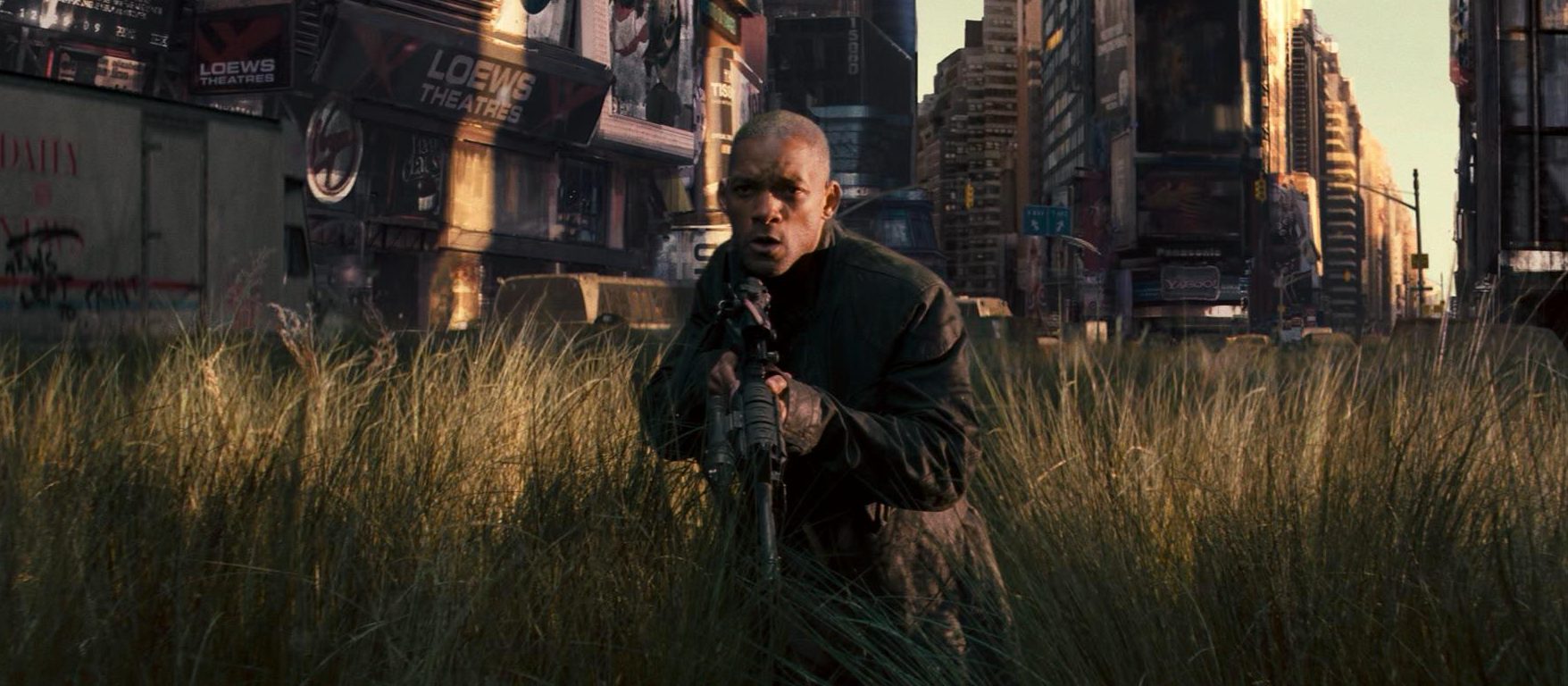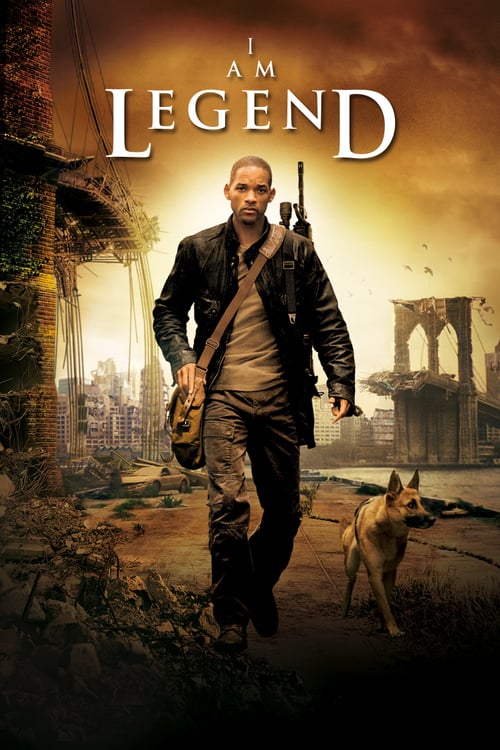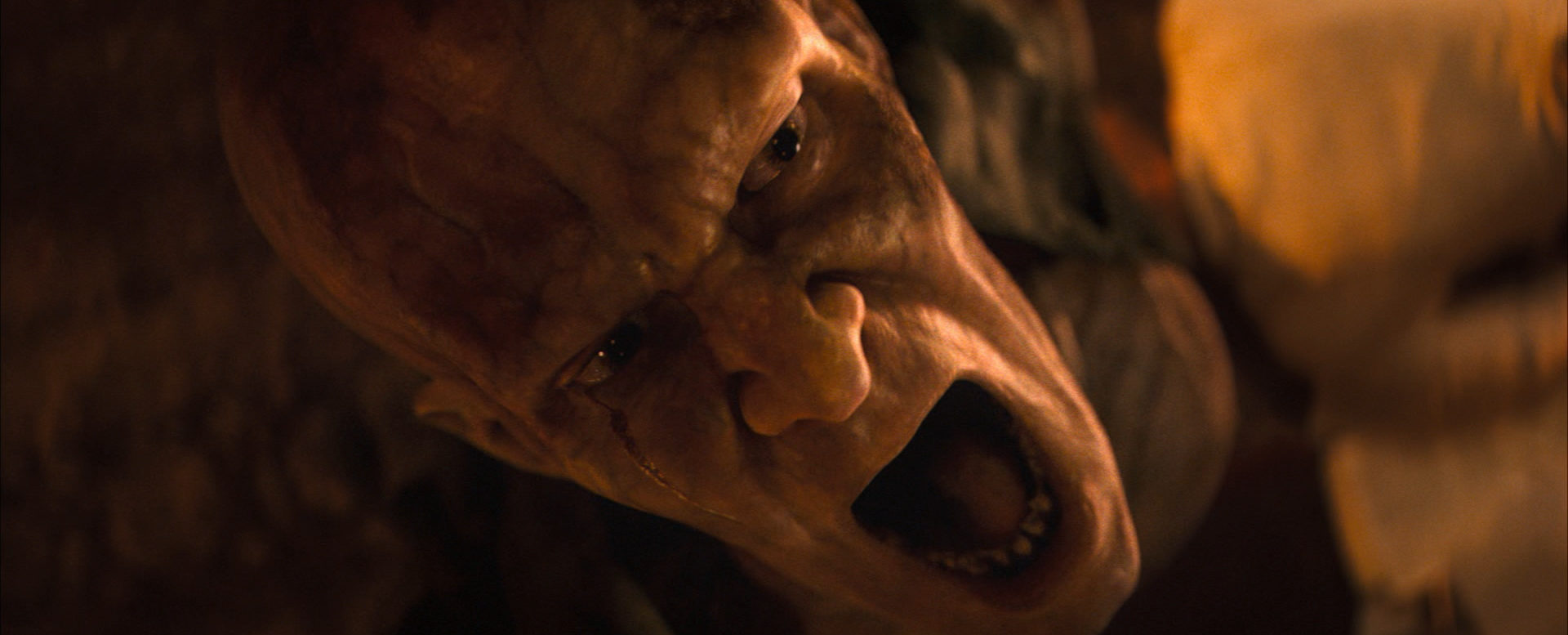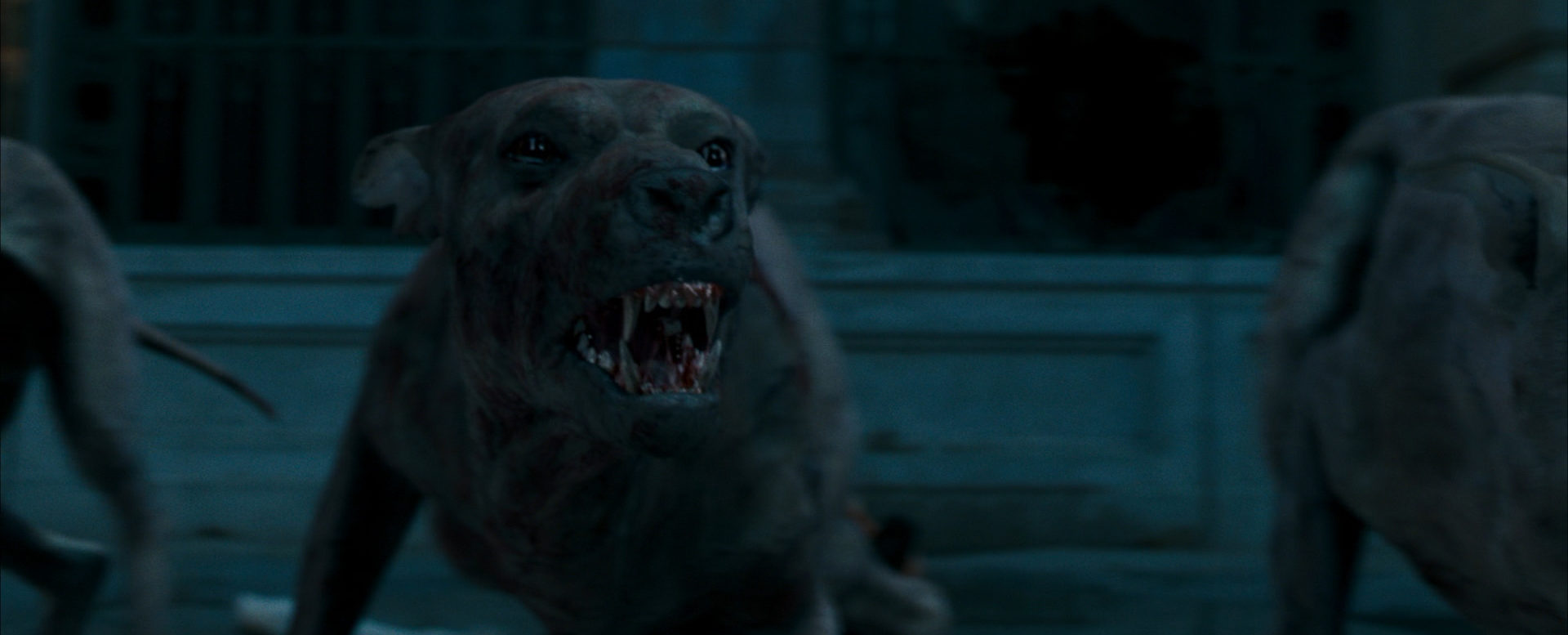

“Nothin’ happened the way it was supposed to happen.”
Watching Will Smith do behind-the-head pull-ups using only a quarter of his range of motion made me laugh. I also found it amusing when he tried to force feed vegetables to his dog. These things aren’t played for laughs though. They’re meant to show you how much of a caring and conscientious person Robert Neville is. But so much of what makes Richard Matheson’s book an engaging read happens inside of Robert Neville’s head. Couple that with the fact that there aren’t really any other people for the last man in NYC (LA in the novel) to converse with, and you see the obstacles that a writer faces when trying to make this thing into a Hollywood blockbuster. There’s just not an easy way to get all the little intricacies that make the book special out into the open. Francis Lawrence and his crew try their darndest though, and meet with some limited success, but this film is largely second-rate.
(I don’t want to dwell on the differences between the book and the movie because then I’d just be sitting here listing things. I’ve already written about the book and why I like it, so just saying that the movie isn’t the book is not a fair critique. Well, maybe it’s fair, but it’s lazy, even if I do it sometimes. The film commits plenty of blunders on its own that are separate from the fact that it drastically diverges from its source material. Suffice to say that these are basically different stories with only a premise, a few story beats, and the main character’s name connecting them. In basically every case where the filmmakers chose to veer from the book, I prefer the book.)
The stage is set with a newscast about cancer cure trials gone awry, then we are presented with an abandoned NYC three years later. Neville lives in a barricaded house in Greenwich village with only his dog Sam for company. Steel shutters cover his windows at night and he has the whole block rigged with explosives outside in case of emergency. He takes all these precautions because bloodthirtsy zombies roam the streets in the dark of night. Technically they’re not zombies, they’re infected humans, and so Neville’s made it his life’s goal to develop a cure from his own immune blood.
Since we are not privy to Neville’s internal thoughts, the filmmakers had to get creative to clue us in to his mental state. They find the most success at this by having Neville record daily video journals where he speaks of the day’s events and describes changes in the behavior of the infected. He also uses a camera mounted to his glasses to document his lab work. In the basement of his house, he is cooking up various serums derived from his blood in an attempt to cure the virus that has swept across the country. He uses rats for his initial trials and eventually captures a live “Darkseeker” to perform tests on.

The documentation angle works very well, I think, but the film falters quite a bit when trying to portray Neville’s emotional state. Early in the film, he visits the local video rental store to exchange one DVD for another. There are a handful of mannequins waiting outside, whom he greets by name. Inside, he speaks to a few more. But then he notices a “new” one that he doesn’t recognize—a female mannequin. He wants to approach her but is too shy to even say hello. He promises Sam that he will say hello tomorrow. I know which element in the book it’s trying to replace—and I agree that it wouldn’t have worked to portray that in the film—but having Will Smith try to flirt with a mannequin in a serious movie is just… I don’t know, man. Made me feel weird. However, this feigned humanity with the mannequins is crucial to a later plot point. Once Neville uses a snare trap to capture a Darkseeker, they pay him back in kind using Fred the mannequin as a lure.
Neville barely escapes that ordeal, and only does so at the expense of Sam—who is cheaply revealed to actually be named Samantha in an attempt to score extra emotional points by switching its sex at the moment of its demise. I mean, if you’re already scoring so many cheap points by killing the dog, it just seems so lame to try to get a few extra by trying to make it some huge revelation that the dog is named Samantha.
There are a few more tacky moments that play like something profound is being revealed when in reality it’s only our expectations for such moments that can actually make it work at all. For instance, in a series of flashbacks to just before the quarantine was implemented, Neville’s daughter (played by Will Smith’s daughter, Willow Smith) repeatedly makes her hands into a “butterfly” and tries to get her dad to look at it. In the film’s climax, he sees a butterfly tattoo on the neck of fellow survivor Anna’s (Alice Braga) neck. The pair are trapped along with Anna’s son in a plexiglass cage meant to contain the subjects of Neville’s human trials. As the alpha male of the Darkseekers rams against the pane, it begins to crack in the pattern of a butterfly. In seemingly irrelevant moments throughout the film, we see a poster of a butterfly on a building, and a real one when Neville is around some vegetation. Is this profound? Does this have any meaning whatsoever?

I think not. It just seems like an easy way to shortcut through actually giving the film some real guts. It’s linked to a conversation that Anna and Neville have just before the Darkseekers attack Neville’s home. Anna had just rescued Neville from certain death the night before, and believes that she had been sent by God. But based on all that Neville has been through, he has no faith in God left. (Because the film isn’t otherwise good enough to warrant serious discussion, aside from this sentence I won’t even touch on Bob Marley’s “message of love” that Neville does put his faith in, going so far as to offer an elementary commentary on it to Anna, who has inexplicably heard of Damian Marley but not his father.) So the butterfly symbolizes that Neville has transformed and is now ready to sacrifice himself for the rest of humanity—i.e. we’re going to try to shoehorn Neville into a Christ-figure. The same guy who just three minutes ago said he doesn’t believe in God? Bleh.
For a movie that takes itself so seriously, there’re just too many discrepancies for it to work. Even if you don’t catch on to everything, subconsciously you should realize how incoherent some of the stuff is. For instance, Anna swoops in and saves Neville just before he dies. But she’s on her way to a survivor’s colony in the northeast. Why would she have bothered travelling to Manhattan, which we know is inaccessible because we were shown how the military destroyed all of the bridges connecting the island to the mainland? But I digress. I Am Legend is an action-horror movie, and it has all of the necessary elements to succeed as one. The gaps in logic don’t detract from the immediate experience and only dampen the impact of the film if you really try to think about it, which most people won’t do.
I understand that there is an alternate ending now available on the director’s cut that was initially intended to be in the theatrical cut but didn’t screen well. Based on a description of it, I’d say it would have worked much better—it would have removed some of the super cheesy connotations implied by the released version and brought the themes more in line with those of the book. It would also make more sense of the butterfly shenanigans, even though their implementation would still feel pretty weak.
I Am Legend is not nearly as good as its source, but it does contain a number of effective scenes and a great setting. Our first encounter with the Darkseekers, as Neville finds them huddling in the dark when he follows Sam into a building chasing after a deer; Neville’s matter-of-fact documentation of his lab results; the death of Sam (as cheap as it is). It’s not easy to carry an entire film with a single character for the most part, but Will Smith does an admirable job. But there is simply too much sloppiness—in the overall narrative, in the attempts at symbolic meaning, in the lackluster CGI zombies. In this third attempt to adapt Matheson’s novel, his classic work once again proves difficult to translate to the screen.